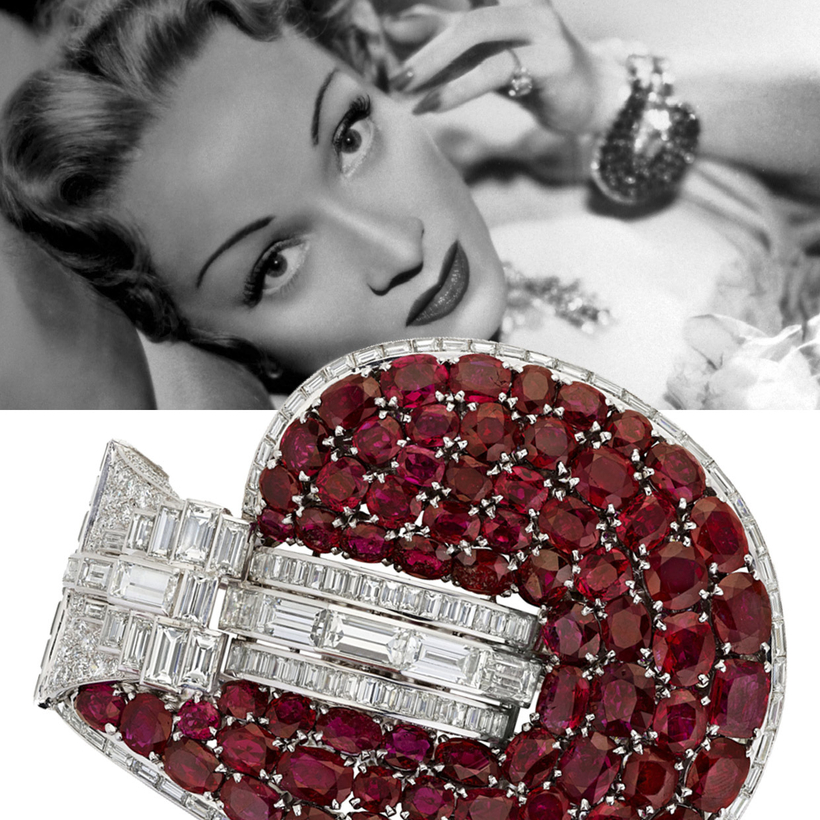She drove her kid-size electric car in the White House basement, and with her siblings perched on the stairs to watch guests arrive for state dinners. Anne Eisenhower was a granddaughter of President Dwight Eisenhower and First Lady Mamie, and her childhood in the White House was anything but normal. “We were the only 3-, 5-, and 8-year-olds who knew how to use finger bowls,” she once said. Born in West Point in 1949, Anne Eisenhower went on to become a successful interior decorator (named one of Architectural Digest’s Top 100 Designers in 1990), a familiar presence on the social scene (Studio 54, Southampton soirées), and a philanthropist of distinctive bona fides (she was a benefactor to the Metropolitan Museum of Art, on the board of the Breast Cancer Research Foundation, and a trustee of the Eisenhower Foundation).

What she kept under the radar was her passion for jewelry. Eisenhower, who died in 2022, was a serious collector. She owned all the big names—Cartier, Van Cleef & Arpels, Harry Winston, and Bulgari among them—and had a whopper of a diamond ring, more iceberg than ice cube. Of the jewelry coming to auction on June 7, the biggest surprise is the important Marlene Dietrich Jarretière, a sumptuous, Burmese ruby-and-diamond creation. Daphne Lingon, head of the jewelry department at Christie’s Americas, talked to AIR MAIL about Eisenhower, whose refined collecting was as curated as her decorating.
RUTH PELTASON: Let’s begin with the bells and whistles. Is this one of the standout auctions of the year?
DAPHNE LINGON: Absolutely! Look, it’s got everything: the owner is a significant person, there’s the amazing Eisenhower history and lineage, and there’s Anne Eisenhower herself, known around New York City. Collections like this that have been in private hands for so long and are now set to be offered to the collecting audience are rare.

R.P.: What can you tell us about Anne Eisenhower?
D.L.: She was a reserved person, a quality evident throughout her life, no matter what she was doing. Certainly her traditional American upbringing is foundational, but she chose to establish herself in New York, socially and professionally. She was part of what was happening in the city in the 80s and 90s, and design was prominent in her life and in her work.
R.P.: Does that factor into her jewelry collection?
D.L.: Without a doubt. Anne loved art—she was a great supporter of the arts—and I think the jewelry she owned expressed her love of design and color, of quality and workmanship. Here, the jewels tell a story as much as the person. She collected jewelry from a significant house or designer, like her Cartier yellow-diamond panther and tiger pieces, or from an important time in history, like the unique Art Deco Tiffany Moonlight Rose bracelet. She tended to collect suites of jewelry, or add to them over time to make complete sets. But if you really want to look at the crown jewel of the entire collection, that has to be the Van Cleef & Arpels Jarretière bracelet.

R.P.: Agreed. Here’s a bracelet that comes with a famous story and provenance. Louis Arpels had the bracelet made for Marlene Dietrich around 1937, yet there doesn’t seem to be any information on it in the Van Cleef & Arpels archives. As though its origins are as mysterious as its original owner.
D.L.: So true, and yet I would say this is one of the greatest jewels created in the 20th century. The scale of it, the quality of it, the sheer engineering and architecture of it. Without question, it will be one of the most important pieces ever sold at auction. You have to remember, too, this was from a time when movie stars wore their own jewelry, bought with their own money. When Dietrich wore the Jarretière bracelet in Hitchcock’s Stage Fright [1950], it pretty much stole the scene.

R.P.: And as your colleague Lisa Hubbard says, “Who would have thought that Anne, reserved by nature, would be the one who would take it over from Marlene Dietrich?”
D.L.: She’s right. In fact, it wasn’t until after Anne purchased the bracelet that her friends even knew she was interested in it.
R.P.: Another important piece is the Moonlight Rose bracelet, from Tiffany & Co. It’s unusual for Tiffany, which wasn’t known for its Art Deco jewelry.
D.L.: It must have been a custom order. It has such a distinct design, and even the addition of the rose-cut diamond is so specific. Actually, it reminds me of a Persian painting, as though someone would have ordered it based on a painting or story.

R.P.: Why should one fall in love with the big diamond ring?
D.L.: For starters, it’s a substantial stone that’s internally flawless. Every diamond has its own personality, and even though this is an emerald cut and over 20 carats, you could have tens upon tens of variations of what I just said. You can get so many distinct interpretations of a large stone, and this one in particular is just so elegant. This is a ring with presence. Pretty much like Anne Eisenhower herself.
“The Magnificent Jewels of Anne Eisenhower” will be on view at Christie’s New York from June 2 through June 6. The auction will take place on June 7
Ruth Peltason is a New York–based editor, writer, and jewelry authority

